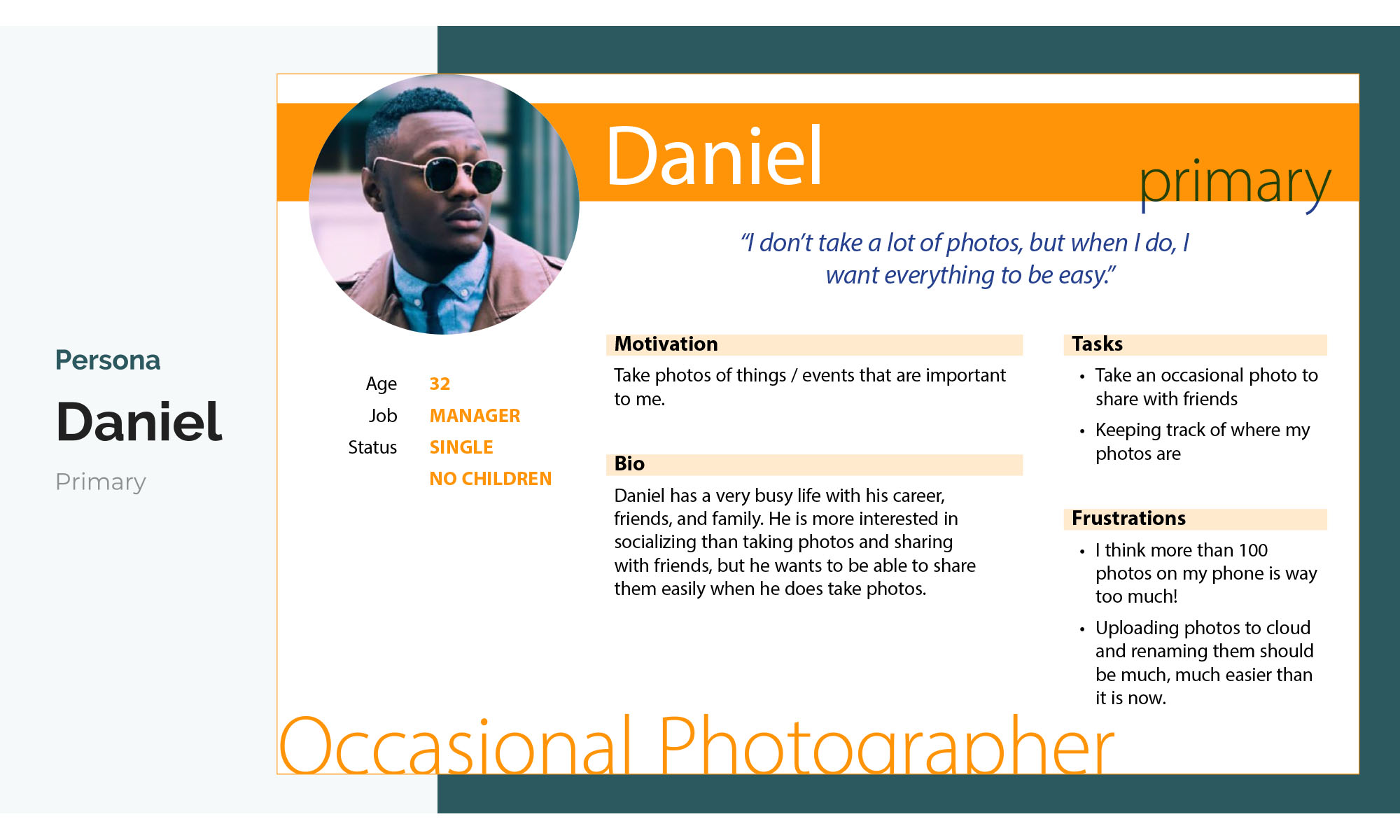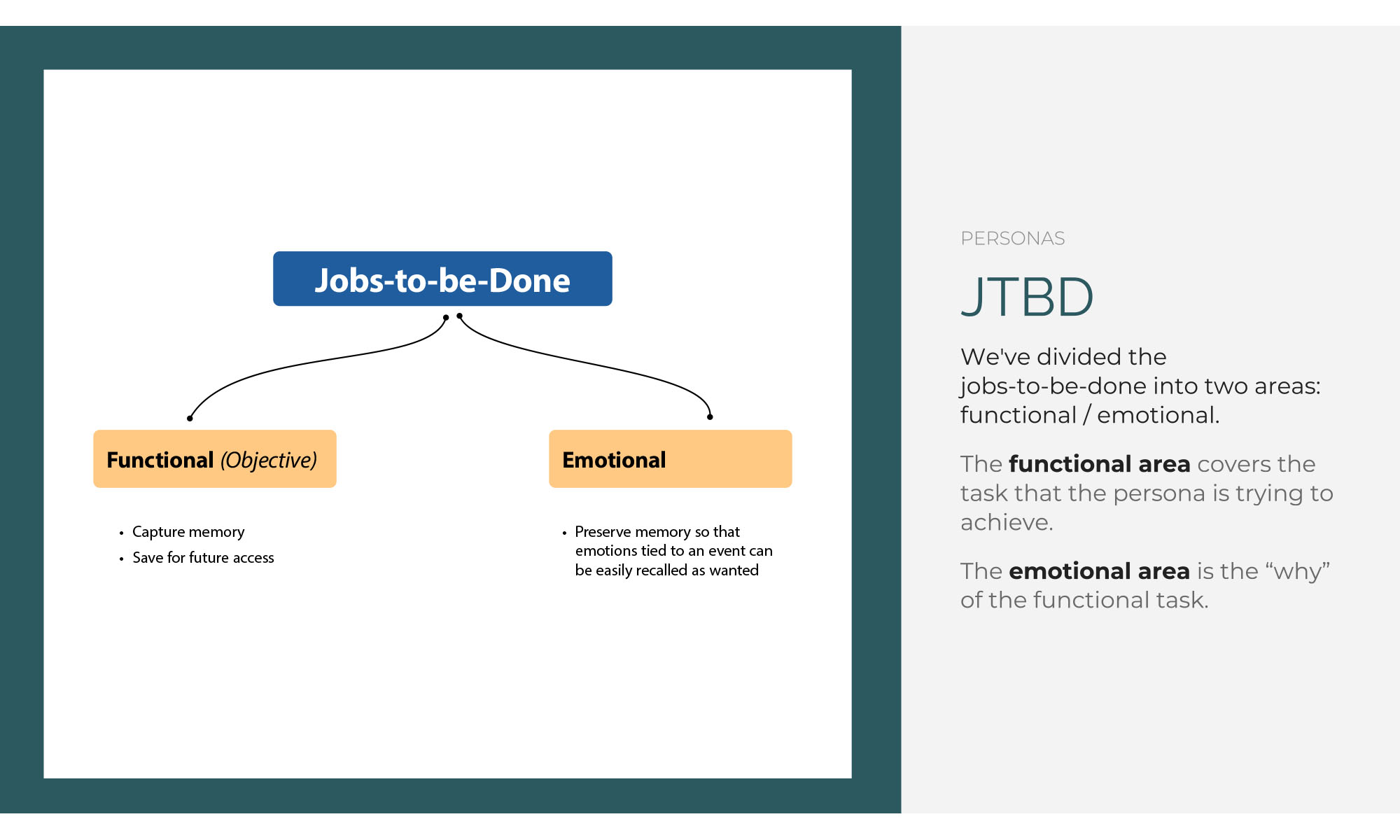Why do we take photos?
The following research was conducted over a seven week time period starting with selecting the research topic and creating a project plan.
The topic I chose to research and explore was “How do people currently share, curate, and access images and videos of important moments so that others can find and enjoy them in the coming months, years, etc.?”
To find the answer to this question, it quickly became apparent in my research, that an underlying question needed to be asked first — “Why do people take photos?” Answering this basic question would reveal the answer to the overarching research topic, which then exposed opportunities to help people with their new found problems of taking photos in a digital age.

Problem
How does one find a single photo when you’re dealing with thousands dumped into one bucket on your phone? Which photos do you keep? How do you share them? How do you keep them safe?
During my research, I discovered that there has been a sea change in technology that has occurred over the past several decades. As a society, we have gone from movies and photographic media printed to film and archival paper respectively, to “Polaroids” and video footage shot in various formats, to mostly online (digital) media (both still and moveable).
Prior to digital, the archiving of movie and photographic media depended a lot on physical storage and atmospheric conditions. With the advent of “smart phones” photography was suddenly not only democratized, it was readily available, comparatively cheap — and consequently “regular people” have started to amass enormous photo libraries, some of which exceed over 20,000 photos — which they are now struggling to manage.
Focus
Purpose, Means, and Access.
- Why do people take photos?
- How are those photos taken? (Camera or ?)
- What are their concerns with storing / curating?

Study Goals
- Purpose
- Means
- Access
- Privacy / Safety
The study was conducted in two stages with 3 age demographics:
Stage one included both Type 1 (60 – 80+ year olds) and Type 2 (40 – 60 year olds) participants. This data was evaluated and additional questions were asked when interviewing Type 3 (20 – 40 year olds) participants in the follow-up study.
The age demographic was deemed important to the study to determine if age is a factor. (Note: All research was conducted remotely utilizing Zoom for in-depth interviews. Transcripts were made available using Descript.)

What Was Learned
Age was not a factor in the overarching goals of Purpose, Means, and Access. All three age demographics shared similar pain points and concerns regarding the safety of their photos. They also used their phones as their primary camera even if they have another camera.
The Key Finding of the study is that all age groups shared the primary purpose in taking a photo — to preserve a memory — an emotive moment in time.

Deliverables
The following artifacts were created out of the research:
- Personas
- User Journey
- JTBD





Recommendations | Opportunities
The data provided the following insight — for all demographics — storage and privacy were concerns for most participants.


“We take photos to capture an event or an emotion of something we want to remember.”
“. . . It’s a moment in time.”

People take photos to capture an emotion. They keep those photos to remember and recapture that emotion . . . that memory.
The Opportunity
Help users curate, safely save, and find their photos on demand in an easily learned and updatable manner.
Note: To request access to the full study, please contact me.


